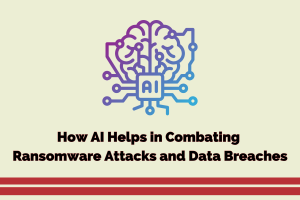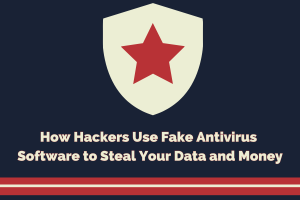Ransomware, AI Attacks & Data Breaches: Your New Web Security Survival Guide

As we cruise through 2025, cybercrime is projected to cost the world $10.5 trillion annually, making it more profitable than the global drug trade. Attacks are no longer limited to large corporations—small businesses, startups, and even individual websites are prime targets. Hackers are using AI-powered malware, ransomware-as-a-service (RaaS), and zero-day exploits to breach websites faster than ever before.
So, the hacks are smarter – are you?
Do you run a business, design websites, or develop applications? If security isn’t your priority, you’re already at risk. It’s a fundamental part of web development. The real question is: Are today’s security measures strong enough to handle tomorrow’s cyber threats?
Let’s talk about the biggest cybersecurity risks in 2025, emerging security trends, and best practices every web developer and business owner should follow to protect their online assets. Going forward, ignore these web security practices at your own risk.
The Biggest Cybersecurity Threats in 2025
What should you look out for right now? Three stand out as the most significant: AI-powered cyberattacks, ransomware-as-a-service (RaaS), and zero-day exploits. While these pose the greatest risks, other threats like supply chain attacks, cloud vulnerabilities, and IoT security gaps are also on the rise. Get to know the biggest threats a bit more:
#1 AI-Powered Cyberattacks: Smarter, Faster, More Dangerous
In their recent Cybersecurity Trends Report, tech consultancy Gartner predicts that 30% of cyberattacks to use AI-generated content, by 2026. That’s a big leap from less than 5% in 2022.
Cybercriminals are using artificial intelligence to automate attacks, bypass security systems, and generate deepfake phishing emails that look frighteningly real. AI can scan thousands of websites in minutes. It can identify weak points and exploit them before developers even know there’s a vulnerability.
Imagine receiving an email from what appears to be your CEO, instructing you to transfer funds or reset a password. The email looks, sounds, and even mimics the CEO’s writing style, but it’s actually AI-generated fraud.
#2 Ransomware-as-a-Service (RaaS): Subscription-Based Cybercrime?
Ransomware is evolving—fast. By 2031, global ransomware damage costs will hit $265 billion, as per the Cybersecurity Ventures Ransomware Report’s prediction. But how?
Cybercriminals are now selling ready-made ransomware kits on the dark web. This makes it easier for even low-level hackers to execute high-level attacks. Businesses of all sizes—not just big corporations—are at risk. Just one click on a malicious link can lock up an entire company’s data, forcing them to pay millions in Bitcoin to regain access. And even after paying, there’s no guarantee they’ll get their data back.
#3 Zero-Day Exploits: Attacks Before Patches Exist
Zero-day vulnerabilities are flaws in software that hackers discover before the developers do. Instead of reporting them, attackers use these vulnerabilities to breach systems, steal data, or deploy malware—before a patch is even available.
According to Google’s Project Zero Report, zero-day vulnerabilities increased by 50% between 2022 and 2024. This means developers can’t afford to wait for updates. They need proactive security measures to detect and block suspicious activity in real time.
Key Web Security Trends in 2025
As cyber threats grow more sophisticated, security strategies must evolve to keep up. Trends like Zero Trust Architecture, quantum-resistant encryption, and passwordless authentication are reshaping how businesses and developers approach cybersecurity. These shifts aren’t just recommendations—they’re quickly becoming industry standards for staying protected in an increasingly hostile digital world.
Zero Trust Architecture (ZTA) Becomes the Standard
Here’s another prediction from Gartner’s Cybersecurity Trends Report: 75% of companies will replace VPNs with Zero Trust solutions by 2026.
The traditional security model assumed if a user was inside a company’s network, they could be trusted. That assumption is now obsolete. Zero Trust follows one rule: “Never trust, always verify.” Every request—whether internal or external—is treated as a potential threat until verified.
Quantum Computing Threats on the Horizon
Businesses that store sensitive data for the long term need to start preparing for quantum-resistant encryption now.
Quantum computers will eventually be powerful enough to break traditional encryption methods. While we’re not there yet, NIST (National Institute of Standards and Technology) is already working on post-quantum cryptographic algorithms.
The Rise of Passwordless Authentication
Passwords are one of the weakest links in cybersecurity. Stolen credentials are responsible for most data breaches, which is why businesses are shifting toward passwordless authentication using biometrics, security keys, and passkeys.
The Gartner report estimates that by 2025, 60% of large enterprises will phase out passwords in favor of more secure authentication methods.
Best Security Practices for Web Development
Web security isn’t just about preventing attacks—it’s about reducing risks before they happen. Here’s how businesses and developers can stay protected:
Secure Coding Practices
- Follow the OWASP Top 10 security risks and conduct regular code audits.
- Use parameterized queries to prevent SQL injections.
- Sanitize inputs to block cross-site scripting (XSS) attacks.
Multi-Factor Authentication (MFA)
- Enforce hardware-based authentication (YubiKey, Google Titan, etc.).
- Require biometric verification or one-time passcodes for admin access.
HTTPS & Secure Headers
- Enforce HSTS (HTTP Strict Transport Security) to prevent man-in-the-middle attacks.
- Use Content Security Policy (CSP) headers to stop malicious scripts.
Regular Software Updates & Patch Management
- Automate security updates to fix vulnerabilities before they are exploited.
- Remove outdated plugins and dependencies from web applications.
Web Application Firewalls (WAFs)
- Protect against SQL injections, XSS attacks, and DDoS attacks.
- Use cloud-based WAF solutions like Cloudflare, AWS WAF, or Imperva.
Data Encryption
- Encrypt all sensitive data using AES-256 encryption.
- Implement end-to-end encryption (E2EE) for customer communications.
AI-Powered Threat Detection
- Deploy AI-driven cybersecurity tools to detect anomalies in real time.
- Use behavioral analytics to identify and stop suspicious activity before it causes damage.
What’s Next in Web Development Cybersecurity?
- AI will be used for both attack and defense; automated security systems will be essential.
- Quantum-resistant encryption will become standard in the next decade.
- Zero Trust will replace traditional network security models. Perimeter-based security will become obsolete.
Cybersecurity is far from optional for any business with a digital presence. No cause for worry; the threats are evolving, but so are the solutions.
Businesses and developers who prioritize security from the start will be far better prepared to handle the risks ahead. Whether you’re building a personal project or securing a multi-million-dollar platform, taking action now will save you from future damage.
But ask yourself – How secure is my website? If you’re unsure of the answer, now is the time to find out.






